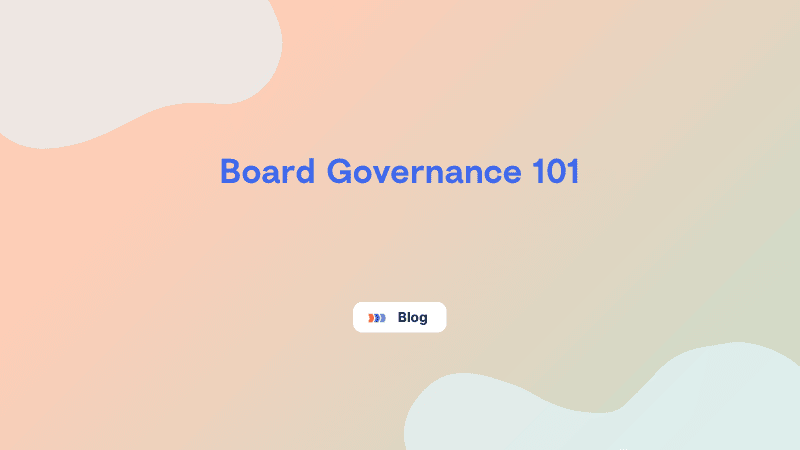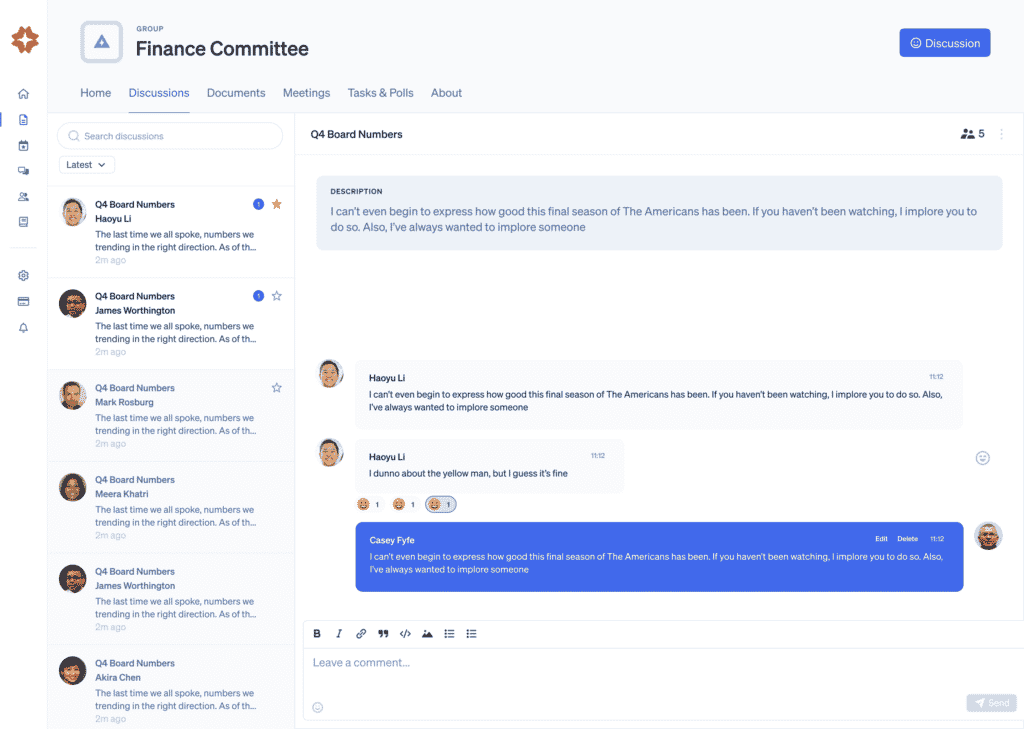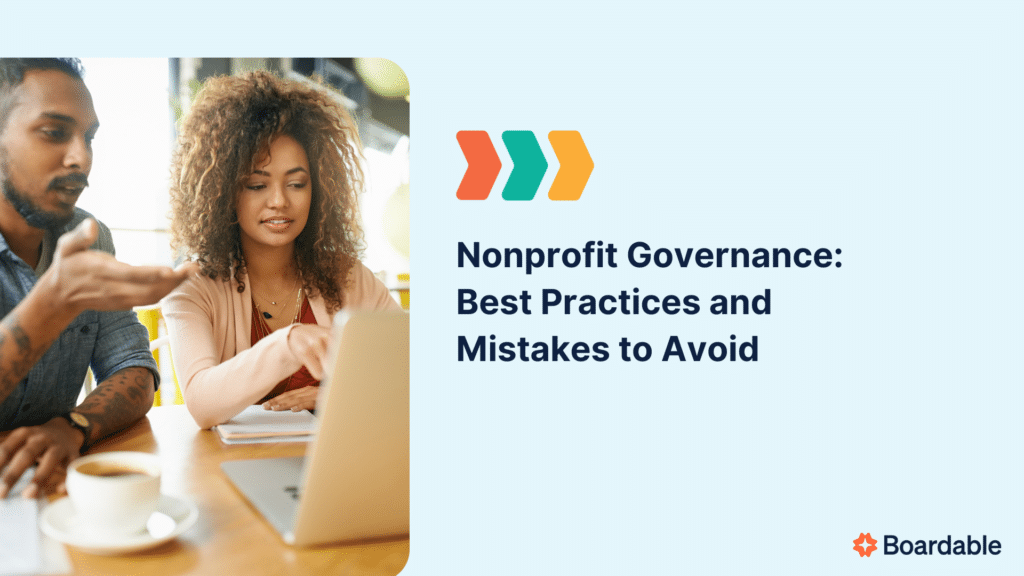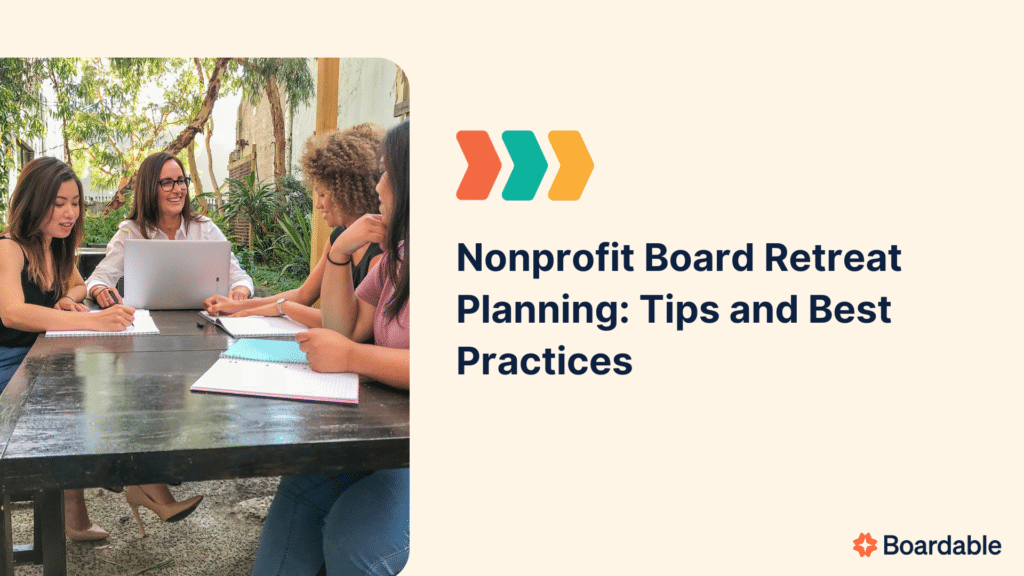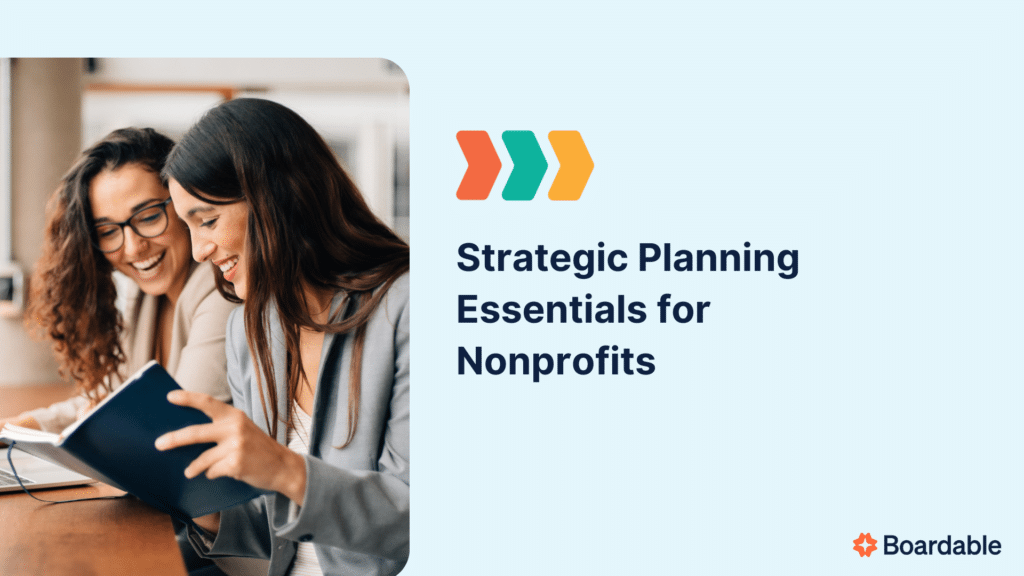Board Governance 101
In general, governance refers to the implementation of policies, procedures, and processes by which an organization is being governed. Governance is not a singular system, but rather composed of various key components and includes multiple actors or stakeholders, each with their own distinct roles and responsibilities.
When it comes to nonprofit organizations, their success is determined not only by the qualities and skills of the upper management and personnel but also by the competencies of board members in charge of governance.
Board members are expected to promote a strong company identity among employees when fulfilling their board member responsibilities in nonprofit governance. Employees’ level of knowledge of their company and their behavior are shaped by organizational identity. Other governance board responsibilities include ensuring that the organization has sufficient resources to carry out its goals and vision. Another is to provide oversight and responsibility in order to guide the organization toward a sustainable future.
Regarding the governance roles and responsibilities in a nonprofit governance structure, here are the 10 basic responsibilities of board members:
- Ensure that strategic planning is in line with the organization’s vision, develop a mission statement, and define the organization’s purpose
- Identify appropriate candidates, conduct interviews, hire the most qualified chief executive, as well as define the job expectations for the position
- Review and approve the budget and project expenses to ensure that they are reasonable in light of the organization’s financial performance and economic activity
- Determine if the organization has sufficient resources to carry out its mission as well as ensure appropriate stewardship
- Conduct a SWOT (Strengths, Weaknesses, Opportunities, and Threats) analysis for short- and long-range planning for the organization
- Comply with laws and legal standards
- Manage the organization’s assets and use them to generate value for the stakeholders
- Identify and recruit new board members and appraise boardroom performance
- Develop a reputation management strategy and establish shareholder engagement
- Strengthen programs and services, evaluate their effectiveness, and make sure they stay in line with the mission and goals of the organization
A governance committee checklist outlines the main responsibilities of a government committee, which is usually made up of no more than five board members. The governance committee structure ensures that the board is operating at peak efficiency and that board processes are being followed.
Board Governance Framework
A corporate governance framework is a set of guidelines for the board of directors on how to conduct business in a transparent and trustworthy manner that benefits all stakeholders. The rules, procedures, and processes by which a company is regulated and controlled are included in a corporate governance framework template. A governance framework template, or a governance framework diagram, might come in handy. This might be helpful when constructing a model that describes the board’s objectives and responsibilities, as well as key organizational processes.
The Deloitte Governance Framework was created to assist organizations in identifying opportunities where they may improve their effectiveness and efficiency. The Deloitte Governance Framework may help reduce the risk of important board tasks being overlooked. This framework also establishes the functions and responsibilities of an effective governing board. A good governance framework can be used to assess governance processes and may help prevent organizational oversight.
What are the elements of a governance framework? A governance framework consists of various elements. For example, it may include project management contracts and agreements between the organization and stakeholders. It may also offer suggestions for balancing opposing stakeholder interests through the development of corporate social responsibility guidelines. Finally, it may provide recommendations to ensure proper information flow and to maintain checks and balances.
Board Governance Best Practices
Board governance is critical to an organization’s success. In general, board governance refers to a set of principles, methods, and processes that are required to make strategic decisions in the organization’s best interests while also providing oversight and accountability. It is important to note that board governance best practices may change over time, which means that the corporate governance best practices 2020 may no longer be applicable in a few years.
When it comes to board governance best practices, here are a few practices that can be adapted and implemented right away:
- Set a time limit for board meetings – This means that board meetings may not exceed the agreed time limit without the unanimous approval of the board members. This can help board members focus on the meeting agenda and prioritize the most important topics for discussion.
- Engage with board members at informal gatherings – Getting to know board members in a relaxed setting can help foster positive relationships among members and promote trust.
- Conduct virtual or hybrid meetings – Virtual or hybrid meetings can help facilitate transparency and shared understanding among team members. Online meetings can also help organizations maintain performance and ensure collaborative decision-making even in a remote setting.
- Utilize dashboard reports – Dashboard reports can measure critical variables within an organization. In addition, a data dashboard can keep everyone in the organization up to date on what is going on and make data-driven decisions.
- Conduct a process check – Board evaluations can help enhance board effectiveness, strengthen the board’s relationship with management, and bring in mutual accountability for the individual behaviors of board members.
Board Governance vs Management
Although the terms governance and management are sometimes used interchangeably, there is a difference between nonprofit board governance vs management. To illustrate the relationship between governance and management, governance is concerned with setting rules and giving required guidelines to steer an organization’s direction. Management, on the other hand, is concerned with making decisions at various levels to bring about the desired change.
Regarding the difference between board of directors and management, the board of directors ensures that the organization is on the right track. They help oversee the entire organization by addressing broader, mission-focused activities. The management, meanwhile, is responsible for the organization’s day-to-day operations and is expected to carry out the decisions made by the board of directors. In a nutshell, the relationship between board of directors and management is that the board of directors delegates responsibilities to the board of managers, and the management fulfills the roles assigned to them.
Board Governance Best Practices Nonprofit
What is board governance? Board governance definition refers to the framework that gives structure to a board and how it operates. Board governance defines the roles and responsibilities of board members and executives.
To illustrate the difference between nonprofit board governance vs management, governance pertains to the duties and responsibilities of the board of directors, while management is concerned with the organization’s daily operations. Governance answers the “what” questions such as what the organization does and what kind of organization it is developing into. Management, however, is concerned about “how” the plans and works of the organization may be delivered to its intended beneficiaries.
By using the best practices checklist for nonprofits, organizations may be able to assess their strengths and weaknesses and how to achieve growth. Organizations may also refer to the best practices of highly effective nonprofit boards as a reference for how their nonprofit board can operate more effectively. Identifying nonprofit policies and procedures as well as setting realistic goals to achieve the mission of the organization, are essential components of any organization’s success.
Here is a list of the five most common nonprofit board governance models:
- Advisory Board Model – The advisory board brings professional skills and talents to provide guidance and recommendations to the governing board of directors. Nonprofit organizations may have one or more advisory boards.
- Cooperative Governance Model – A cooperative governance model provides all members an equal vote. This model is particularly useful for nonprofit organizations with no assigned president or chief executive or without major shareholders.
- Policy Board Model – In this model, the board of directors is second to the CEO in terms of overall influence. This model separates the CEO and the board of directors as independent entities, allowing boards of directors to fulfill their accountability obligations to the organizations they govern.
- Patron Governance Model – This model is similar to the Advisory Board Model, but with a few differences. The board members, for example, have less power over the chief executive officer than in the Advisory Board Model. In addition, in a Patron Governance Model, board members are primarily concerned with fundraising. Board members donate their own funds to the organization and persuade others in their network to do so as well.
- Management Team Model – Different committees for each board function may be established by a nonprofit organization with a management team model. This indicates that the nonprofit follows the same processes as a for-profit business.
Board Governance Consulting
A nonprofit organization can benefit greatly from the services of a certified nonprofit consultant. When performing their functions, nonprofit board governance consultants may face various challenges. These include managing endless emails for board communications, tracking missing files and association records, holding meetings without a clear agenda, and accomplishing little, as well as accountability and oversight issues.
Organizations can learn from high-performing nonprofits such as McKinsey when developing their growth strategies. The McKinsey governance model, for example, may provide insight into how nonprofits may fulfill high professional and ethical standards. In addition, in order to improve board effectiveness, it may be good to consider the McKinsey board of directors’ client selection policies and the McKinsey advisory board to enhance board effectiveness.
Moreover, adopting new technologies and digital solutions such as a board management platform can allow nonprofit organizations to better manage their board members, enabling them to accomplish mission-critical tasks more effectively.
Boardable’s all-in-one platform can support organizations with their board operations and streamline board governance. For example, Boardable Spotlight is a fully integrated video conferencing system that can help organizations run successful virtual and hybrid meetings for improved board member engagement and collaboration. Get started for free today.
